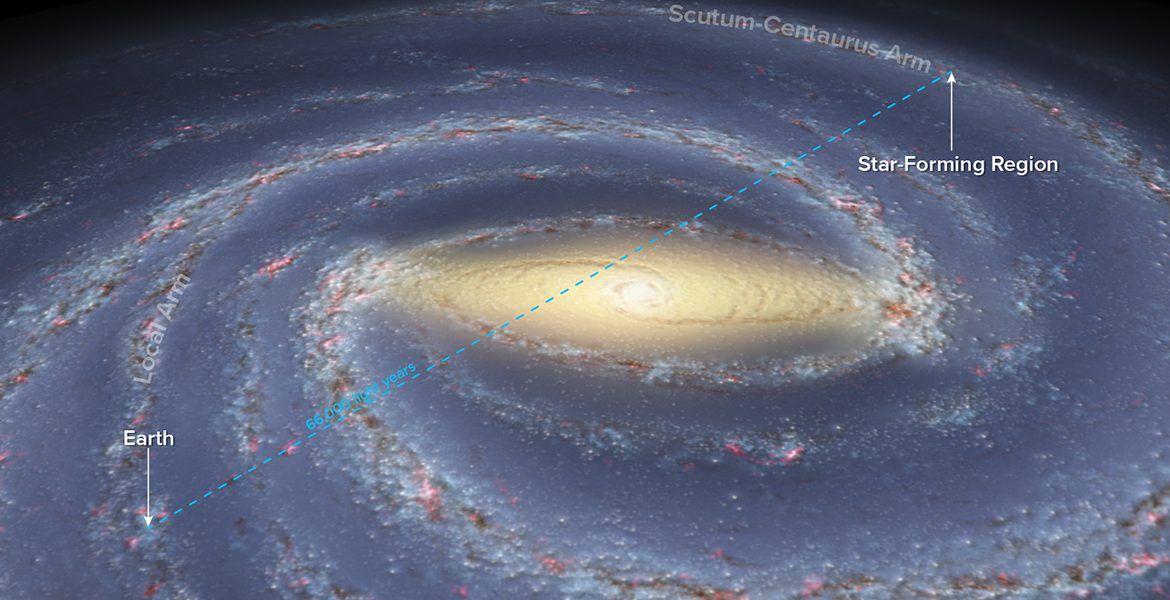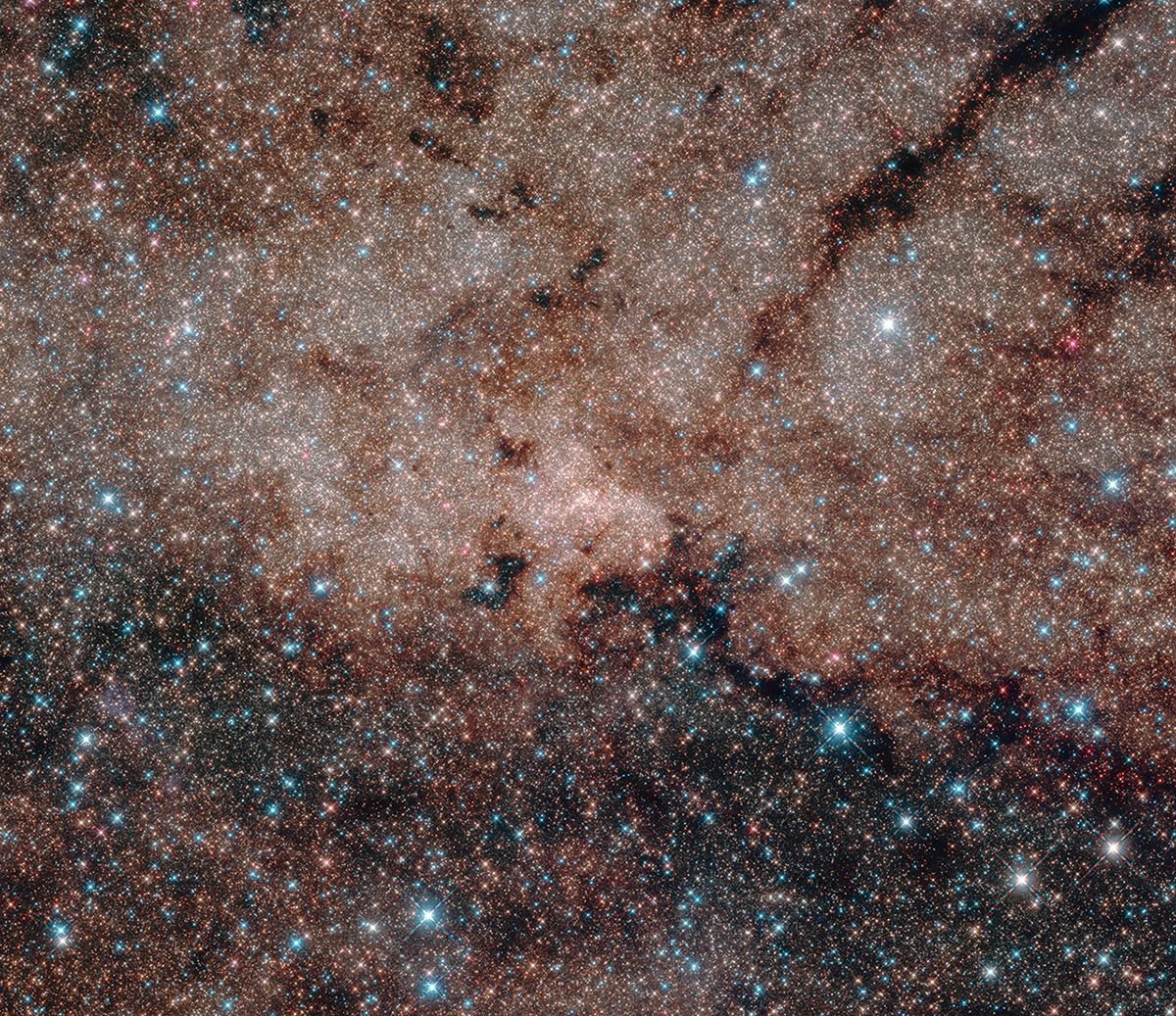
Home, wherever you live on planet Earth, is tucked into a scattering of stars called the Orion Spur, which slips between the arms of our Milky Way galaxy like a mistake between a cookie's cinnamon swirls. On one side of the Orion Spur, towards the edge of the galaxy, rings the Perseus Arm; between our neighborhood and the center of the galaxy loops the Scutum-Centaurus Arm. Unlike the Orion Spur, which tapers out into just a bit beyond the Sun, the Scutum-Centaurus Arm keeps going—and going, plausibly even looping around the Milky Way.
There's just one problem: It's really hard to see over there, through the center of the galaxy and all the interstellar dust that clouds it, which means our map of the Milky Way looks like a pie missing a slice directly across from us. Astronomers are pretty sure the patterns we see on this side of the Milky Way keep going, but they've never been able to measure the far side of the galaxy directly.
A paper published today in Science changes that, reporting the first time scientists have pinned down a point straight across the Milky Way's heart. That point is the catchily named G007.47+00.05, a region where stars are being born—and where patches of steam broadcast a bright signal to radio telescopes. Specifically, to the Very Long Baseline Array, which is made up of 10 separate instruments stretching from Hawaii to the Virgin Islands to New Hampshire.
The scientists stared at the bright region for a full year to tap into a phenomenon called trigonometric parallax. Fancy words aside, you're familiar with this effect: Hold a finger up in front of your nose and close first your right eye, then your left eye. The background will shift behind your finger, as if you had moved your finger to the left. The closer your nose is to your finger, the more it will appear to have moved—do it enough times and you could calculate the distance to your finger based just on the apparent jump.

Astronomers have been doing the same thing with stars since 1838. In the case of the new measurement, Earth's yearly orbit around the sun provides the telescope with left-eye and right-eye views, galaxies beyond the Milky Way are the background, and that bright star-forming region is your finger. When the team did the math, they calculated that the star-forming region is 66,000 light-years away.
That's the first step to building a true map of the missing slice of the Milky Way, particularly when pieced together with other projects trying to solve the same mystery. Ironically, it's a much more complicated process than pointing the Hubble Space Telescope to a neighboring galaxy—but it will still let us trace the Milky Way's swirls for the first time.
Uncommon Knowledge
Newsweek is committed to challenging conventional wisdom and finding connections in the search for common ground.
Newsweek is committed to challenging conventional wisdom and finding connections in the search for common ground.
About the writer
Meghan Bartels is a science journalist based in New York City who covers the science happening on the surface of ... Read more
To read how Newsweek uses AI as a newsroom tool, Click here.








